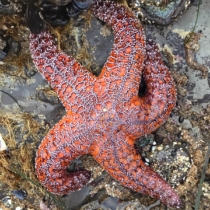This installment of Climate Connections by Sara Hutto Ocean Climate Program Coordinator for NOAA’s Greater Farallones National Marine Sanctuary was funded by NOAA’s CA Bay Watershed Education and Training (B-WET) Program
Hello LiMPETS educators, and welcome to the first edition of Climate Connections, where we connect you to the latest information on our changing climate. Not only is it a new year, but a new decade, so first let’s focus on where things stand and what this means for the special coast and ocean places we love.

Image of recent and significant marine heatwaves, from Frölicher and Laufkötter (2018)
- Former NASA director and climate activist James Hansen reports that 2019 was the 2nd warmest year on record, the five warmest years on record are the past five years, and the ten warmest years on record are all in the 21st century
- InsideClimate News reviews key findings from the last decade of climate science, including accelerated sea level rise, intensified marine heatwaves, and improved science that connects extreme events to climate change
- Reported by the LA times, a new study by NOAA scientists finds the waters off California are acidifying twice as fast as the global average
- The International Panel on Climate Change found that since the 1980s, the rate of ocean warming has more than doubled, marine heat waves have become longer-lasting, more intense and more extensive, and the ocean has taken up between 20 and 30 percent of all human-caused CO2 emissions, worsening acidification of the global ocean.

Sea level rise is already impacting coastal communities (photo credit: CREDIT ARIANNA PROTHERO / WLRN)
So, what can we do about it?
Our ocean is increasingly being recognized for its role in the solution. The Ocean as a Solution for Climate Change details 5 action areas that could help fight climate change, including protecting coastal habitat that sequesters carbon, and shifting our diet to low-carbon marine sources like seaweed and sustainably harvested fish.
Take this insightful quiz to learn more; the most effective ways to curb climate change might surprise you!

Mangrove restoration can store and sequester carbon (photo credit: @damsea_shutterstock)


































